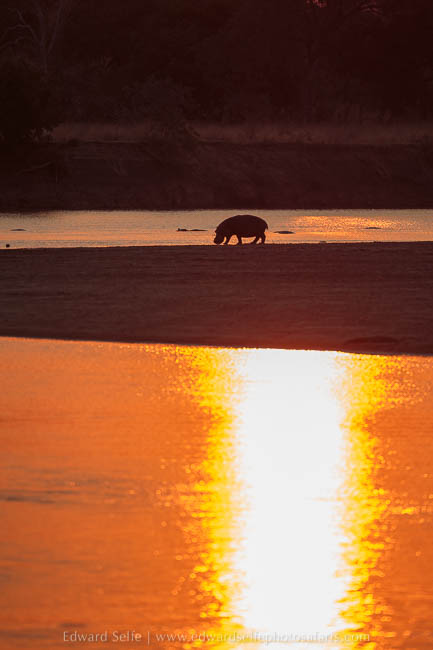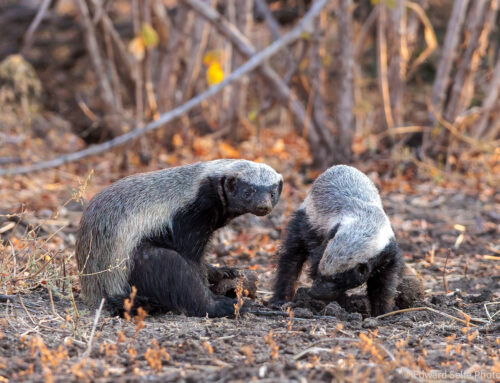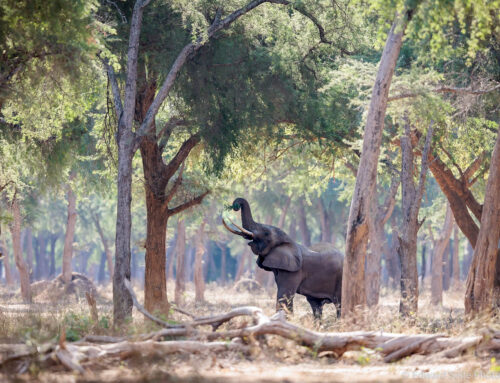This trip was Mike White’s 4th visit to South Luangwa!! He has been visiting in July each year since 2016 and I’ve always enjoyed running a private tour for him. With a background in landscape photography, it’s great to guide him on a wildlife safari and see how he applies his keen eye and compositional style to scenes.
However, I must admit to being a little nervous about this trip. I have total faith in the sightings of South Luangwa, but we are always viewing a snapshot in time with any safari. After the trip that we had last year, I wondered how Luangwa could possibly trump its own record!
I needn’t have worried. Not only was Mike completely relaxed about what Nature would send our way, but Luangwa was superb as always! We arrived late into camp, checked over our camera kit and prepared for an early departure the following morning. Quick access into the National Park is one of the first criteria that I look for when I choose camps for my guests as the early morning time is very valuable and doesn’t last long.
I heard lions calling near the camp in the night so we headed to the area where the sounds had come from. We scouted around but were soon distracted by the amazing forested areas around Lunga Lagoon where we had enjoyed so many stunning photo opportunities in the past. After a bit of planning and some co-operative elephants, we were able to combine this beautiful, sculptural tree with a breeding herd as they crossed a dry lagoon.
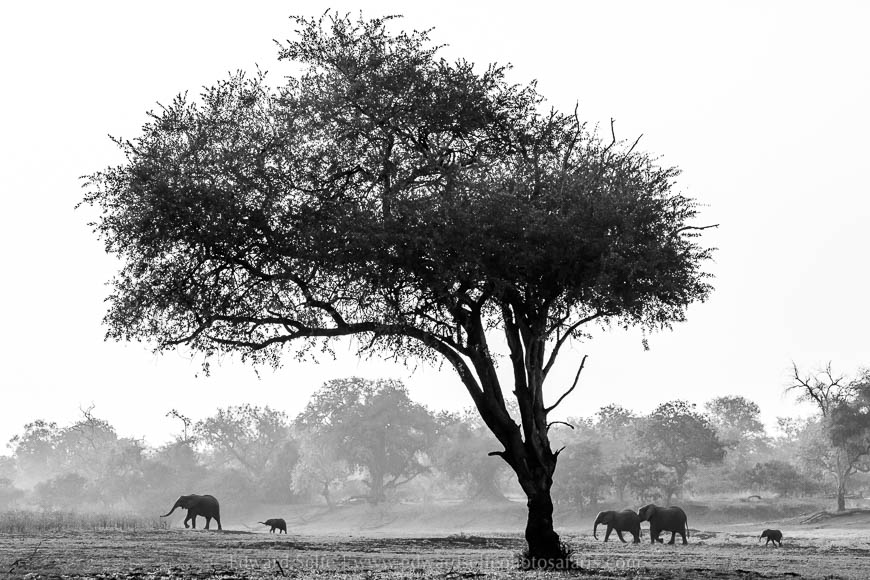
Early in the afternoon drive, alarm calls led us back to the area where the lions had been calling in the morning, and it didn’t take us long to find two lionesses moving from the thickets towards the river. They had to cross a muddy channel so, knowing the area well, I drove round in front in time to photograph the second female leaping across!
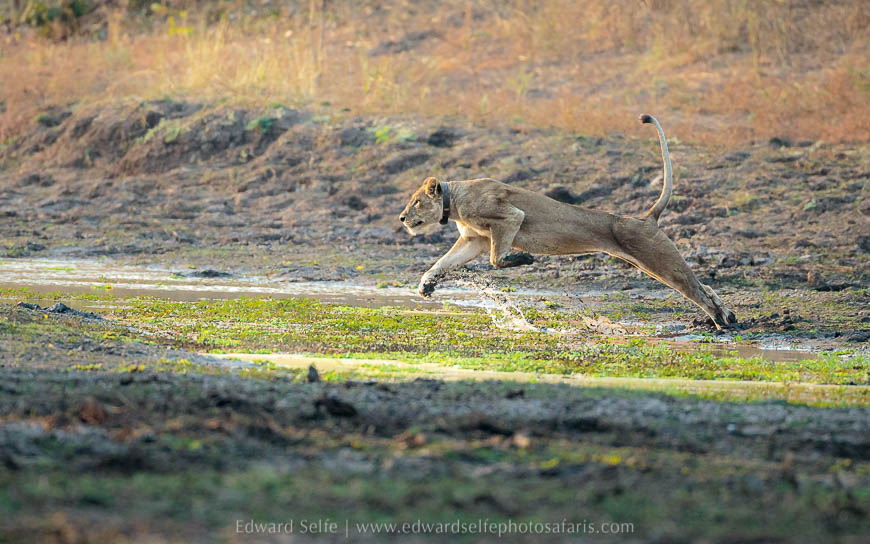
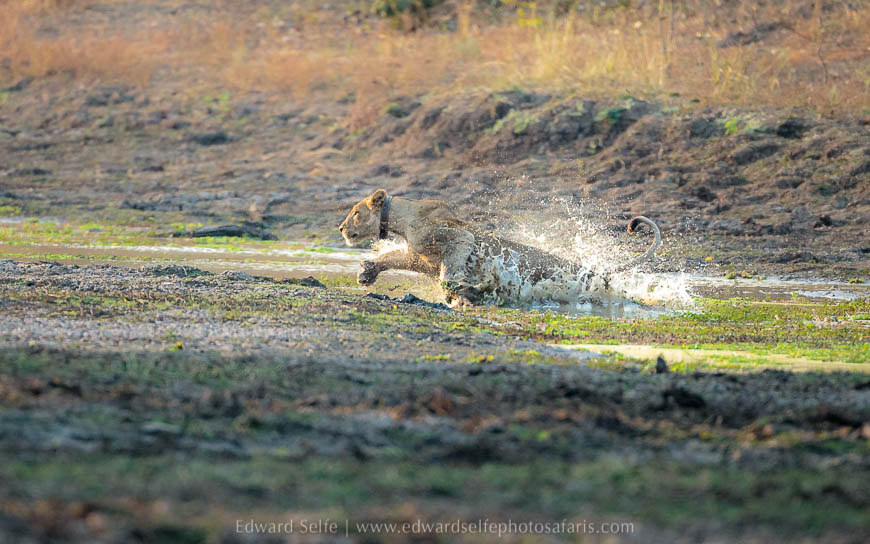
We were treated to a wonderful display by those two lions that afternoon. They initially rested on the river bank against the hazy afternoon light and then, when the wind picked up and blew sand in their faces, they walked along the top of the bank — battling with the wind and sand — before settling down against the sunset!
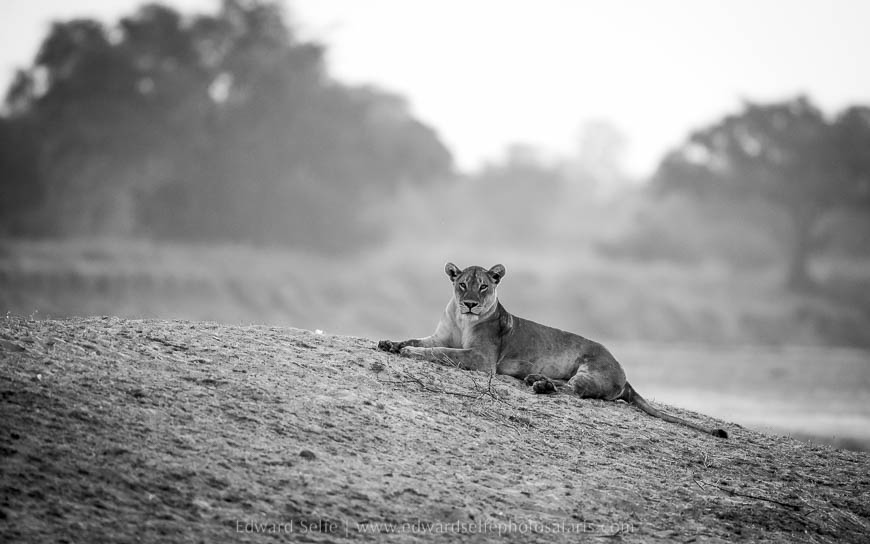
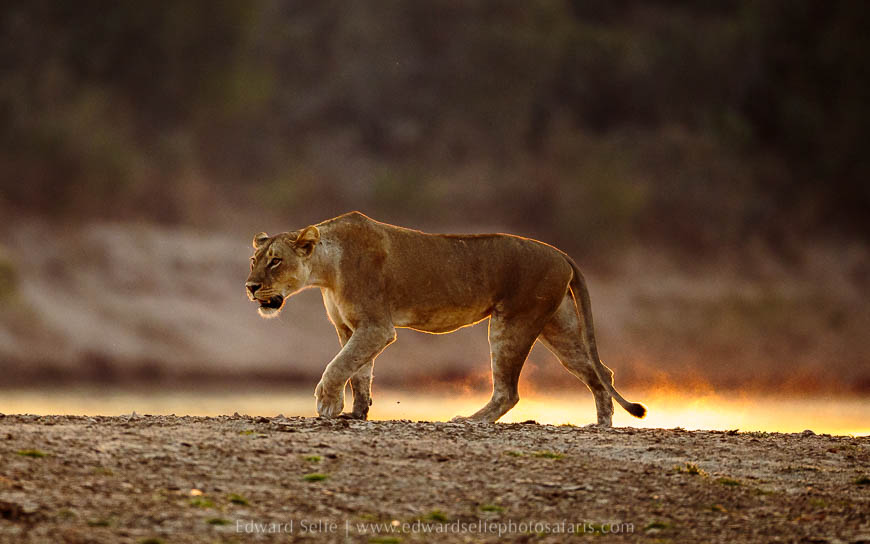
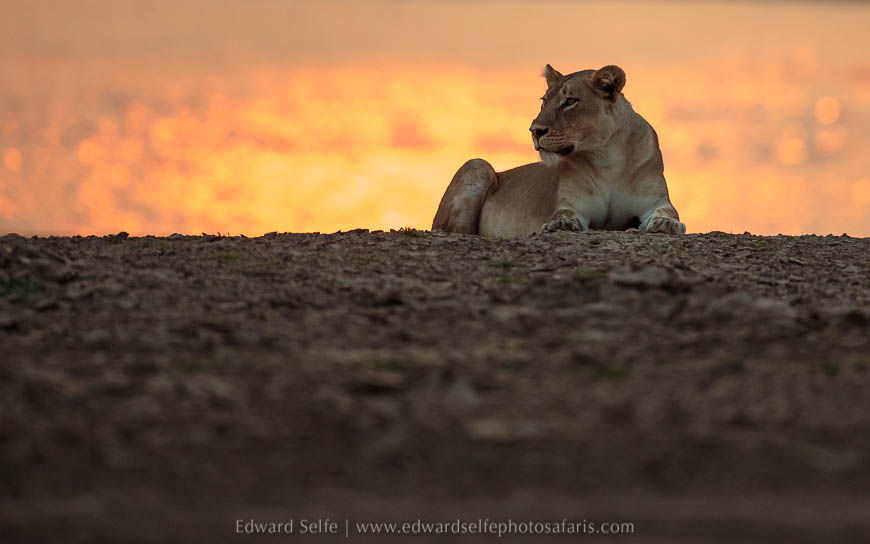
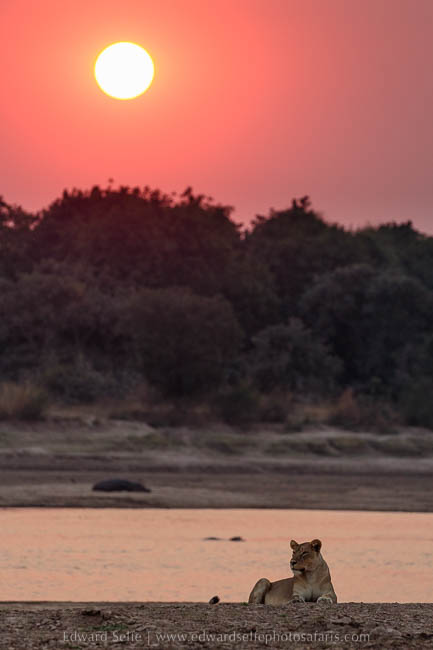
After the sun had set, the pair started to eye-up the herds of puku that were feeding on the short grass plain near the river. Without a sound, one female broke off left and circled round the back of the “island” that we were on and the other female kept low and prepared to flush the antelope. It was a great plan: one female would drive the puku through a narrow floodplain between the “island” and a line of trees about 100m away. The plan nearly worked out, but the puku scattered and slipped through the net. It was clear that with another 2 or 3 lions in the trap, they would have been successful; lions are most effective in prides of a large number of hunters.
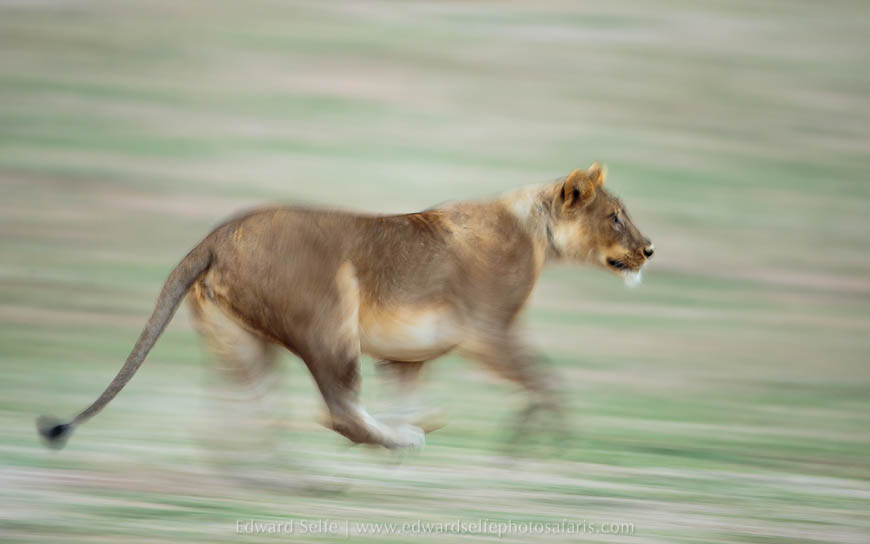
I knew that I would not be able to get a sharp image of the lioness ambushing the antelope, so we reduced our ISOs to introduce blur intentionally. The results were pretty good, especially since the lioness was moving away from us. This technique works best when the subject is moving perpendicular to the camera.
Thrilled with the afternoon’s lion sighting, we headed back to camp, keen to rest so that we could start very early again in the morning. As we were having supper, the two lionesses passed the camp’s dining area and killed a puku 50m in front of one of the chalets! We watched from the deck until they carried the carcass off into the bush to eat in peace!
We heard the lions again early in the morning the next day, and we quickly found them near camp. We tracked them as best we could but lost them in the thick bushes. It seems that they settled down for the day, so at sunrise we moved off to seek other opportunities. As the sun broke through the trees, we played with backlit elephant shots and then reflections of waterbirds in Lunga lagoon. As is always the case, we hope to photograph predator behaviour in the best light, but when that is not on offer, we embrace whatever Nature gives us to make the best of the great light before 09.00 in the morning.
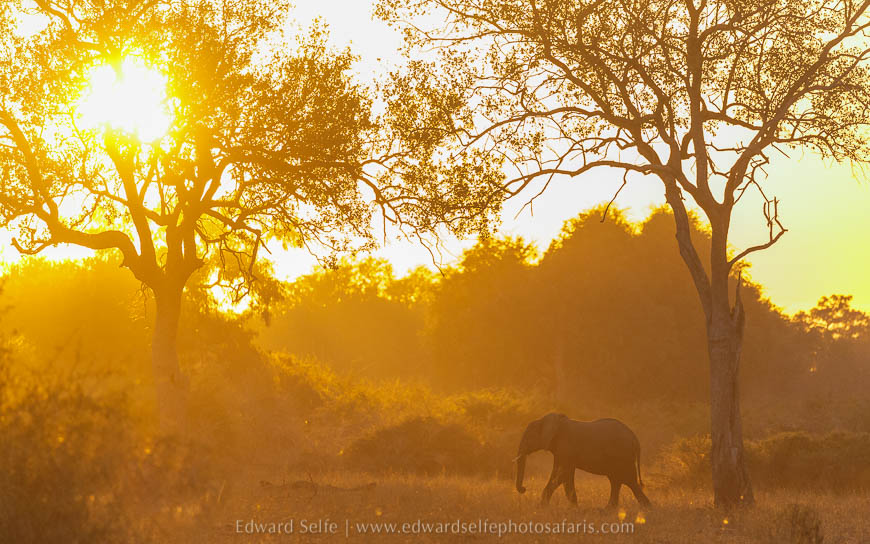
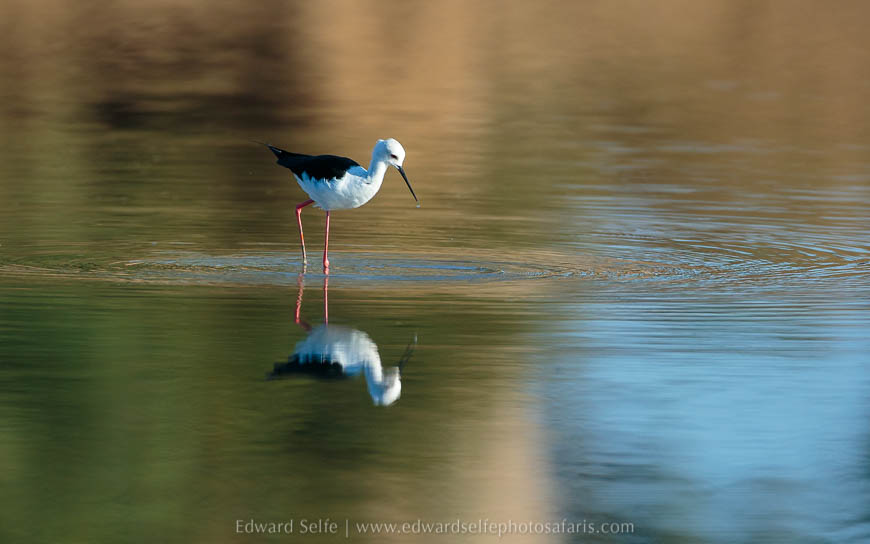
Later that morning we enjoyed some very young giraffe calves and an elephant that seemed intent on pulling down all the branches of a whitethorn acacia!
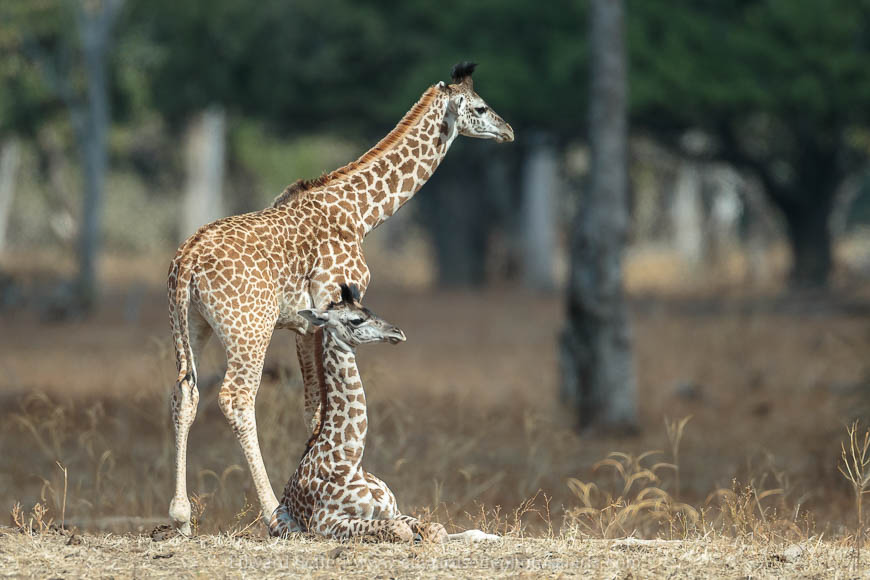
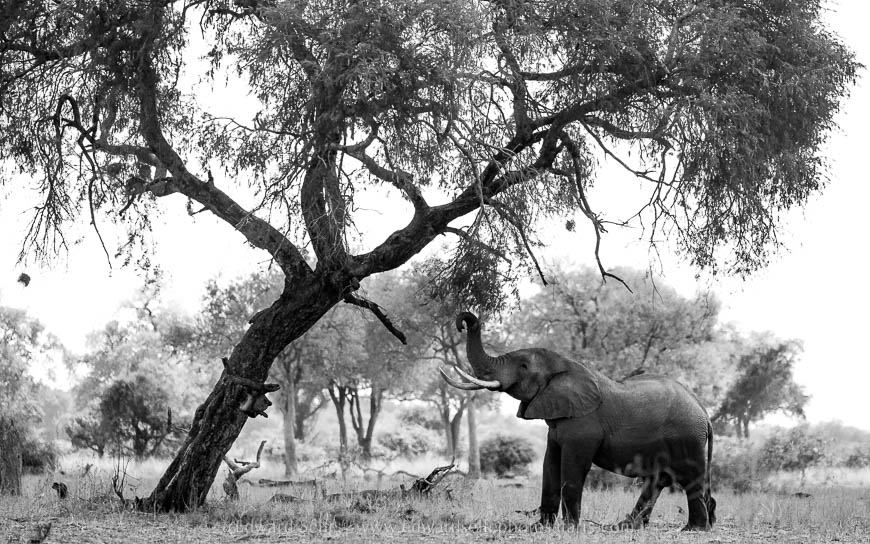
Our afternoon outing was quieter, but it gave us a chance to practice panning blur technique (which we had started on the lion the day before) on antelope close to camp. We ended with a superb sunset.
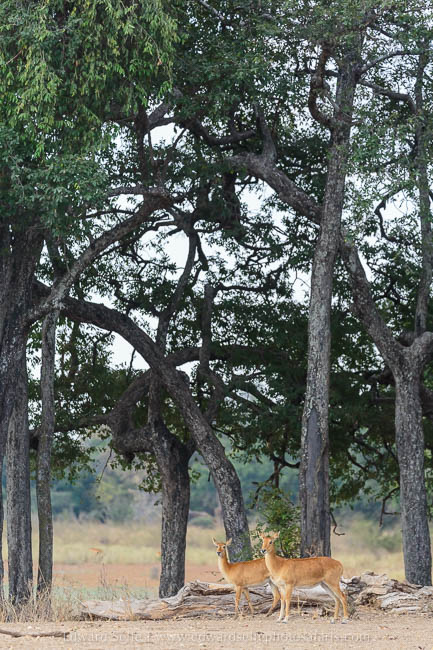
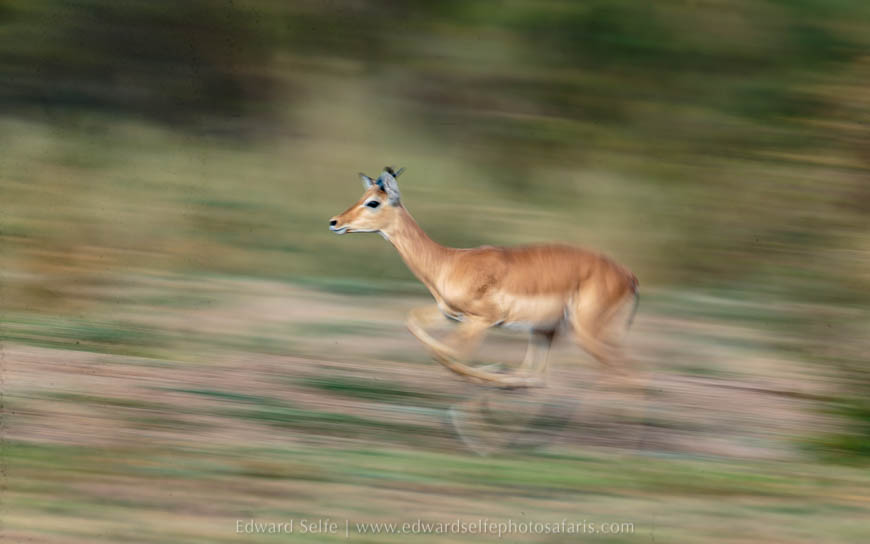
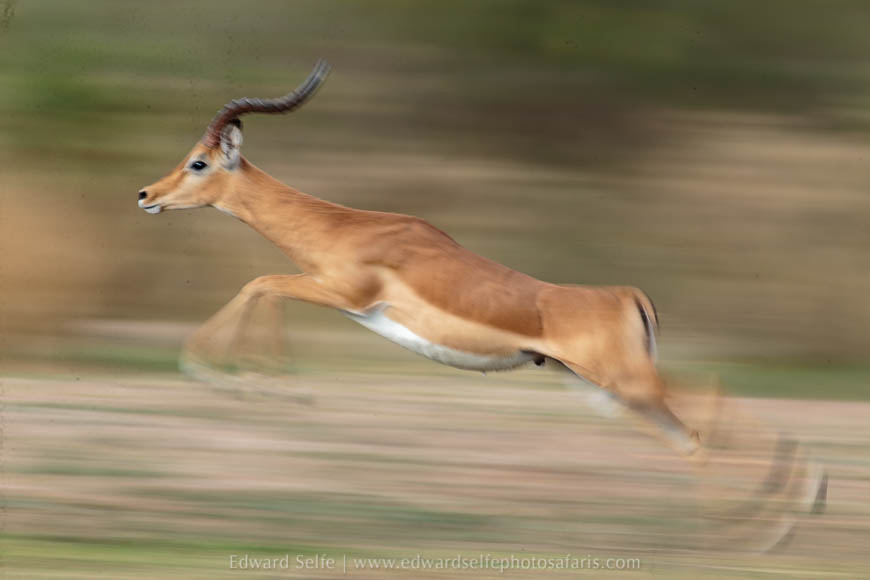
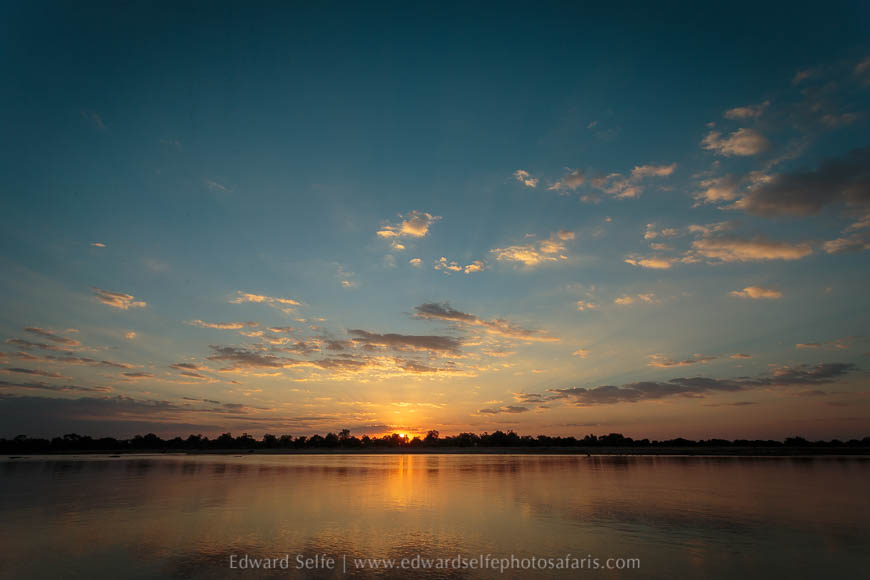
We started day 4 bright and early, departing camp long before sunrise. It turned out to be one of the most diverse and exciting days we had on safari. We started with stunning light on a group of giraffes — think pink, soft light against green vegetation — and then we spent time with buffalo who were coming to drink in a channel. The afternoon gave us a pride of 14 lions, including cubs, but they were rather full of buffalo meat, so they weren’t very active! As we left them, I saw a small owl in a tree. On closer inspection, it was a pearl-spotted owlet which had caught a Lilian’s love bird…! As we headed to camp, baboons led us (and another vehicle simultaneously) to a leopard who was emerging from her hideout….using the other vehicle’s light, we shot some stunning images!
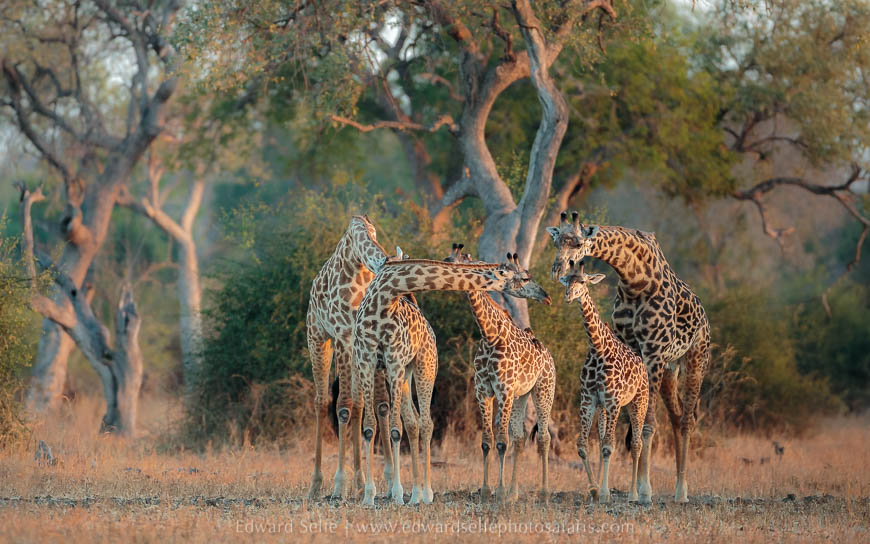
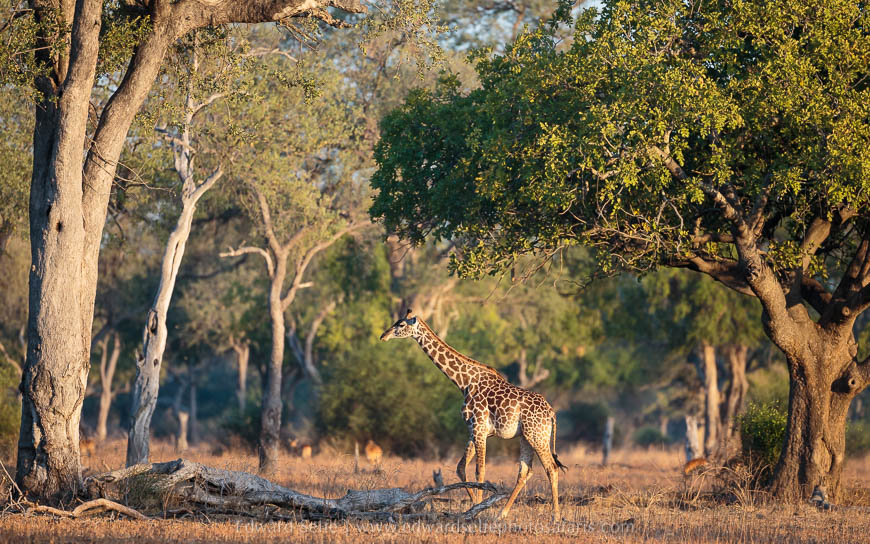
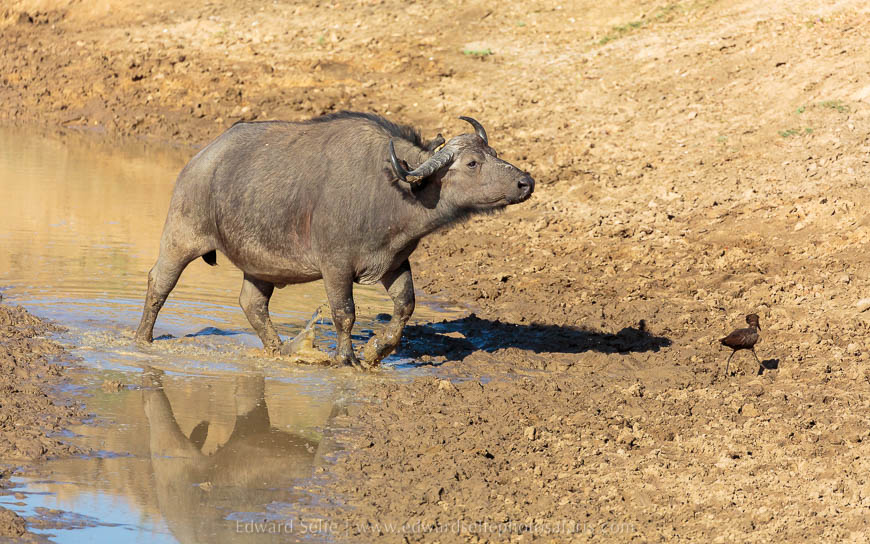
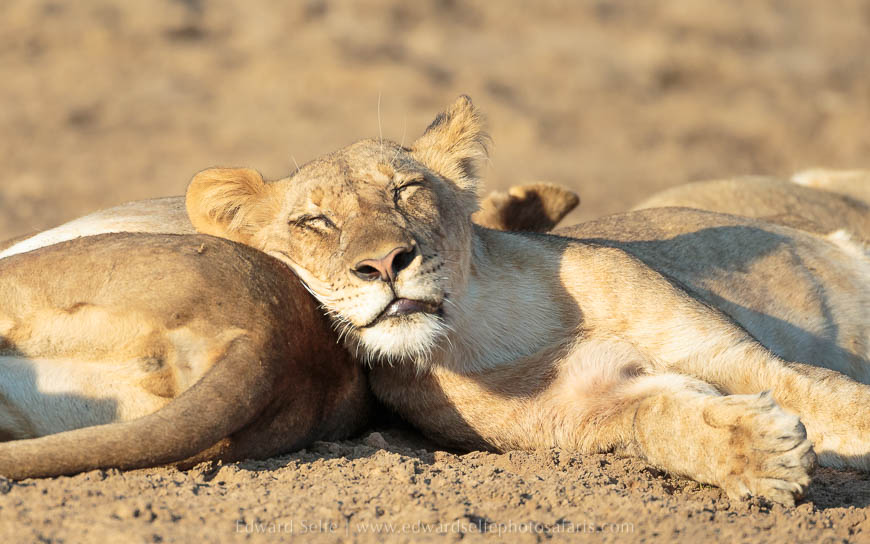
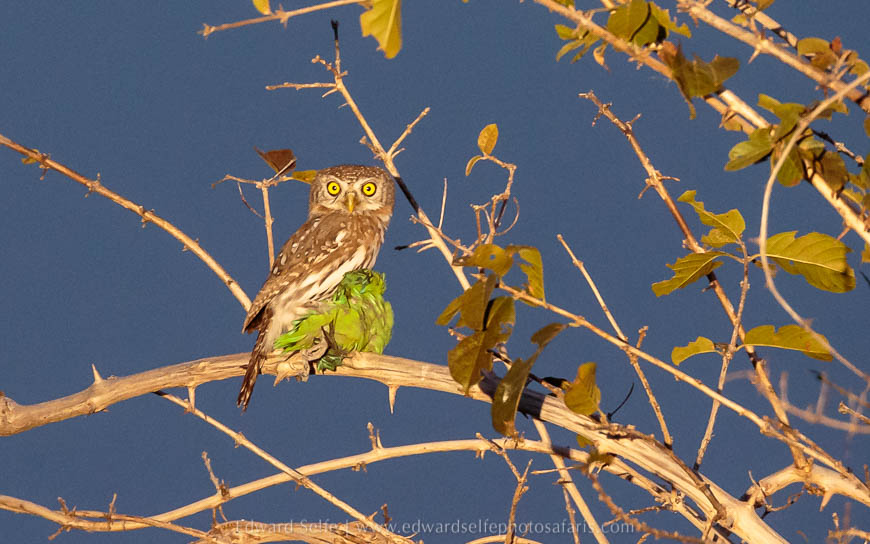
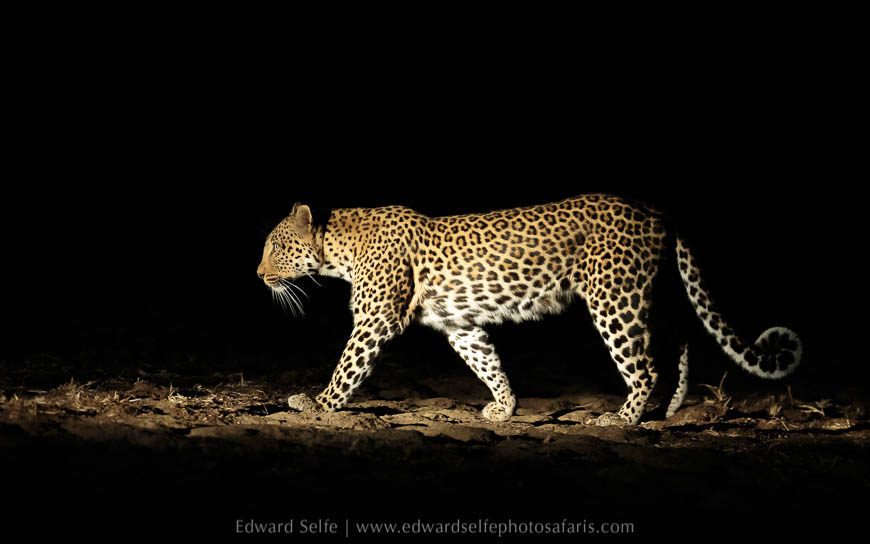
Shooting at night is a tricky technique, but with the right settings on your camera, you stand a good chance of getting sharp photos. Not every shot probably but a much better hit rate than leaving the camera on AUTO!
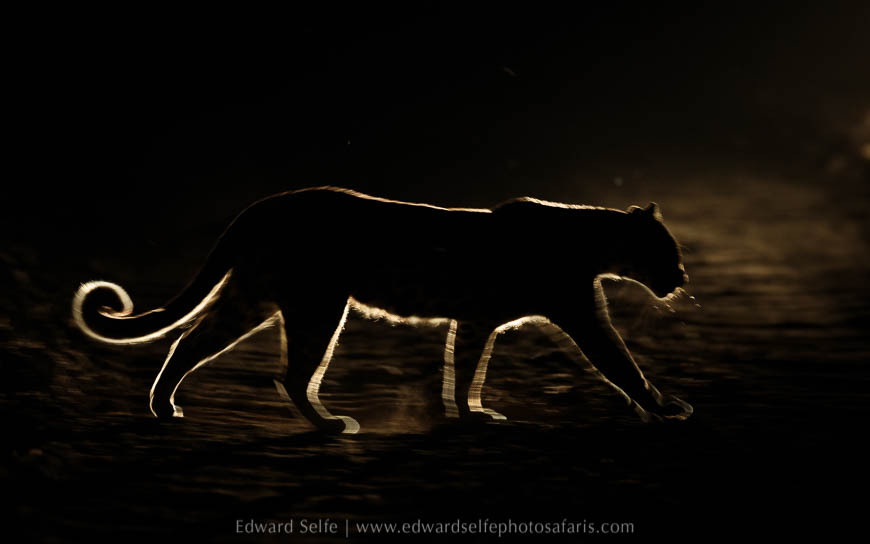
Mike really wanted to see elephants crossing the river. We had been so close to seeing it many times but the elephants don’t cross the river so often in the early season when the water is higher. But we decided to stake out the most heavily used crossing that morning and see what came along. On the way to the crossing, we found a fishing party of storks in Lunga Lagoon and some stunning light in the Tena first ebony grove.
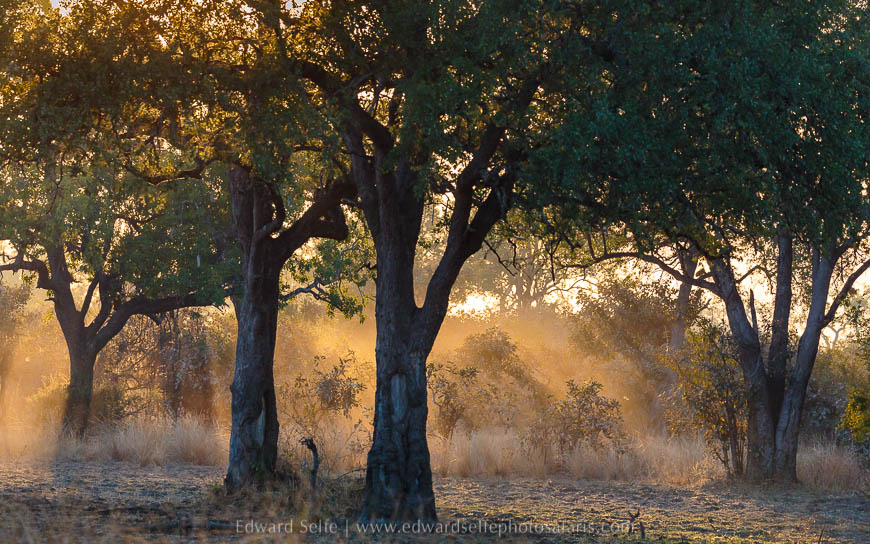
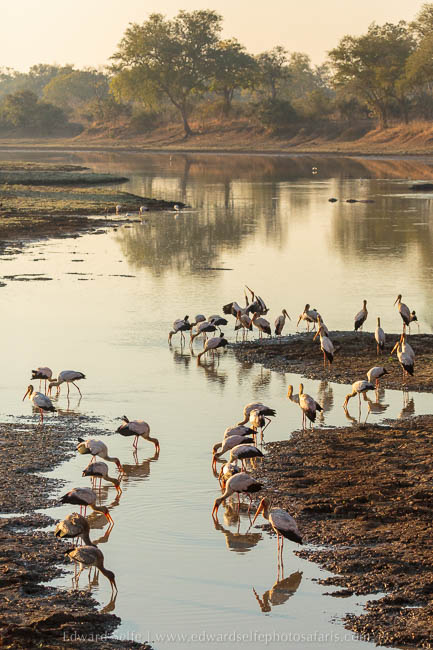
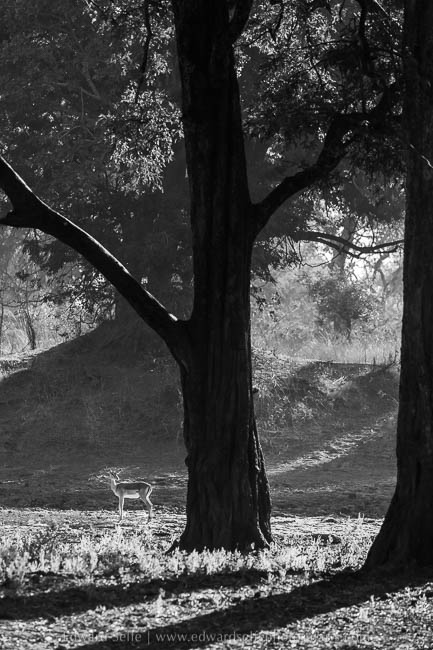
We waited for a long time at the elephant crossing point. Elephants came and went, and some herds came back down to the edge after having moved away. It seemed that a crossing was imminent so we waited! Eventually a large herd and some stragglers started to cross and we got some stunning photos. Mike will be posting a blog of his best images here soon, so I’ll leave this story for him to tell in a couple of months.
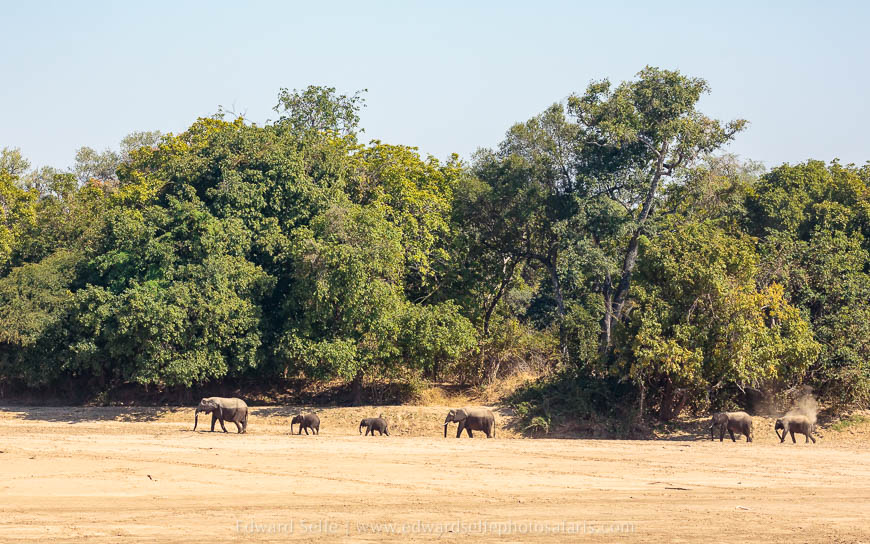
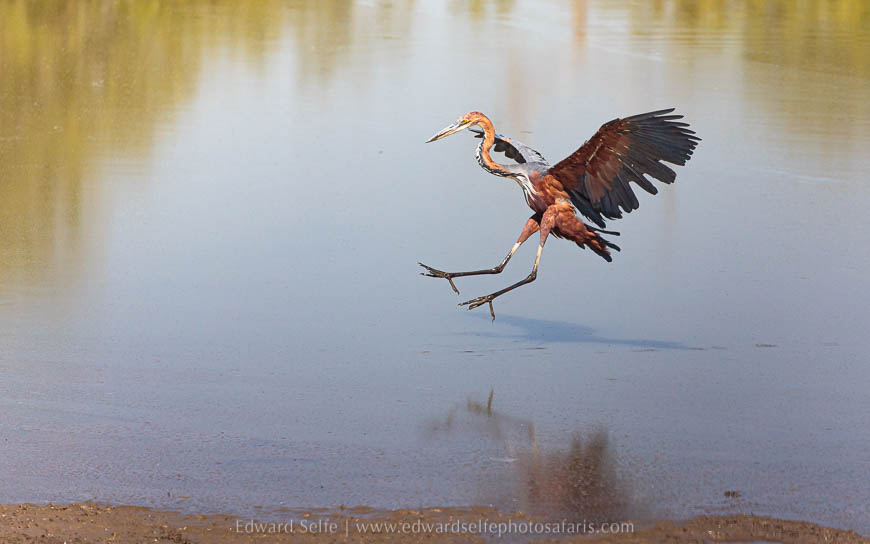
Goliath heron on finals.
We were late heading back to camp that day, but we couldn’t resist sitting in the shade while a large herd of buffalo emerged from the thickets to drink at a big lagoon. Despite the large numbers, I liked the solitude of this single buffalo who went ahead to “test the water”.
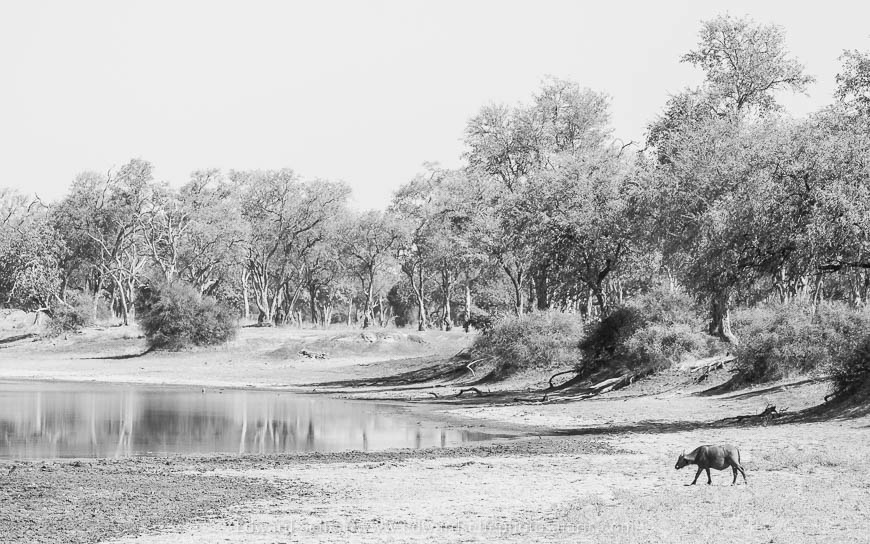
Our afternoon drive was rather quiet. We explored new areas, and were beginning to think that perhaps we would return to camp with very few photos when I heard the distant call of a leopard! It was far away, but I estimated its location and we set off. About 1.5kms away, as the crow flies, we tracked down a very relaxed female leopard who was resting on a fallen tree. Just as we got into position for a photo, she came down and wandered through the grass towards us. She paused near the vehicle, crossed in front of us and then settled down on the river bank. Magic.
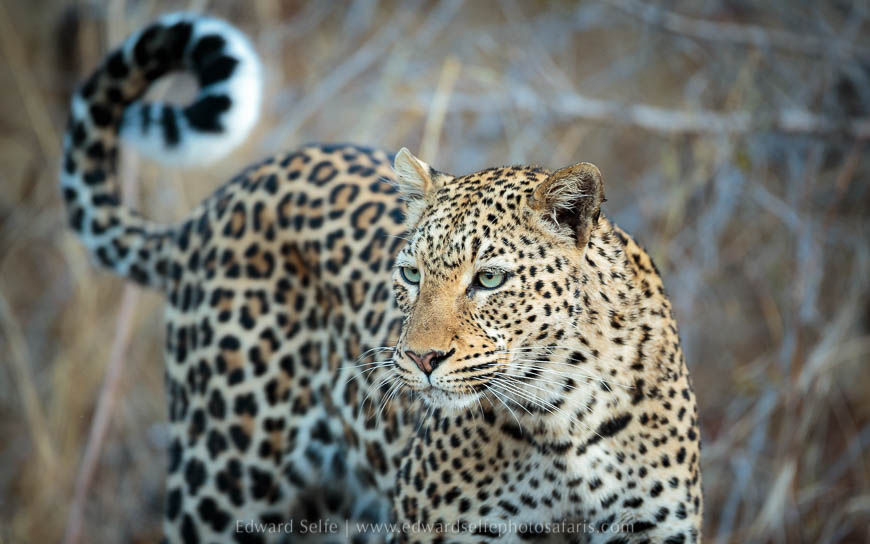
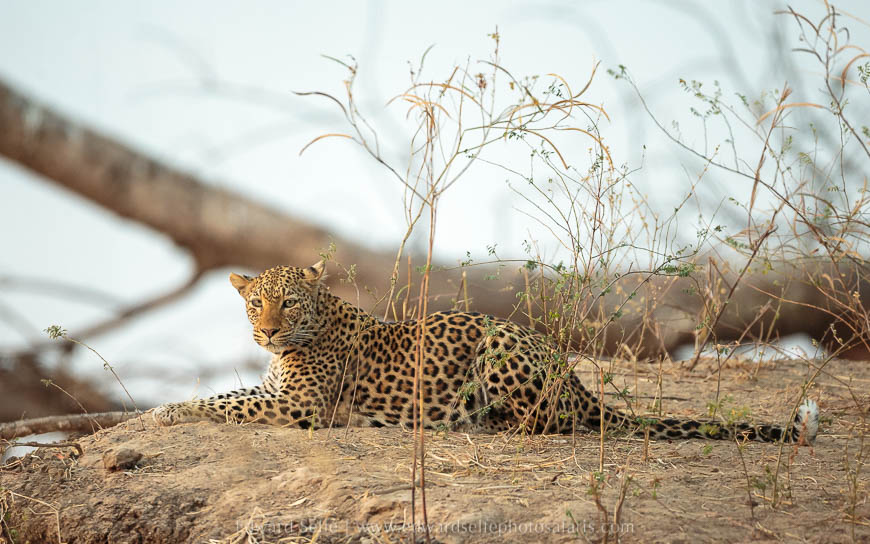
She was calling repeatedly suggesting she is seeking a mate, so we left her and planned to return early in the morning and see if we could find her from the calls. First thing the next morning, after a cold drive, we sat and listened for her calls….not a sound to be heard. We scouted around in case she was back where we had found her before — perhaps she had a kill stashed in a tree — but after a while we moved on to use the beautiful morning light in other ways.
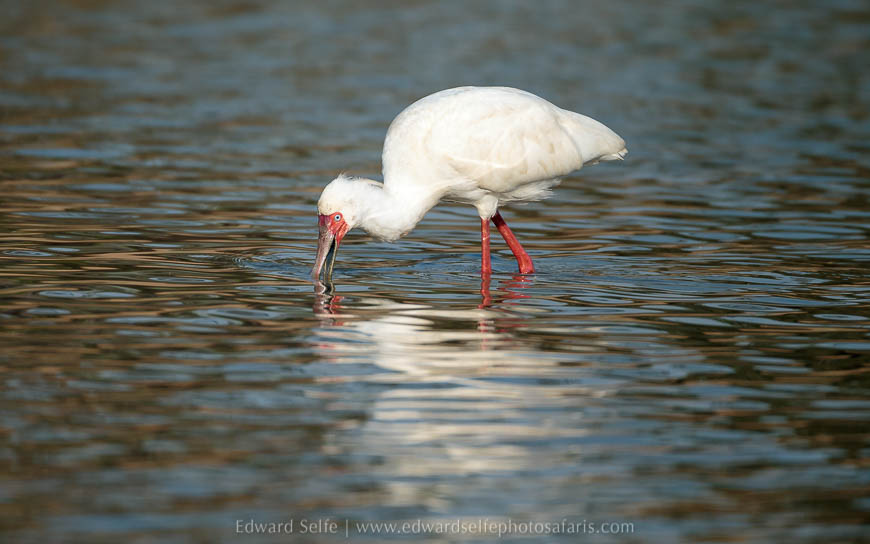
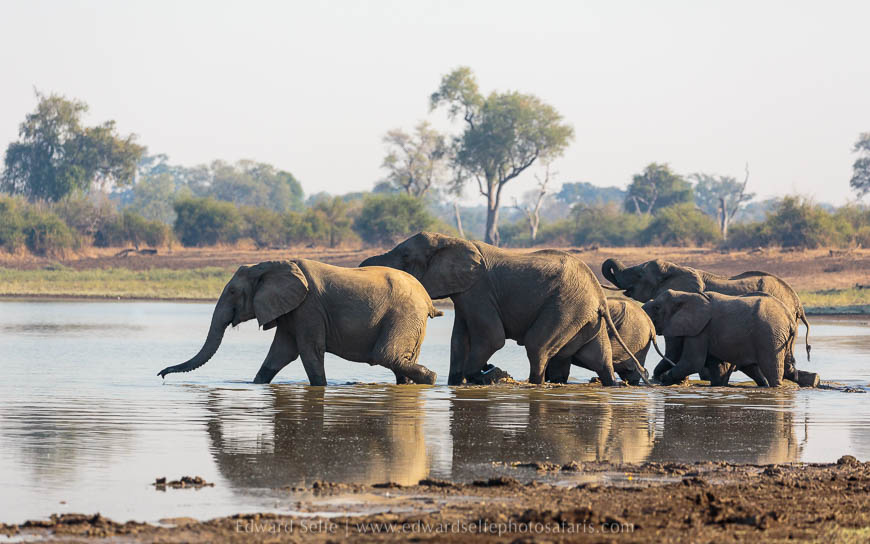
Very late in the morning, we heard alarm calls from impala and puku not far from where we had seen the leopard the previous night. Moving carefully through the area, we found the same leopard moving in a hurry. Unexpectedly, she hopped up on a fallen tree and began to eat a small lump of meat that she had been carrying! She was backlit, with a clear background, and it was stunning! Mike had to shoot across me to get the shot, so I didn’t take any photos to avoid getting in his way, but his “shots of the week” will appear on his blog soon! After finishing her small meal, she moved towards some thickets and was quickly chased off by a hyaena. It seemed that the scavenger had found her kill, stolen it and chased her off. She had salvaged one mouthful but had to give way to the larger hyaena. We lost her and the scavenger in the thickets but were thrilled with the encounter….and I could see from the back of Mike’s camera that he had some incredible shots of the leopard on the fallen tree. All our disappointment of the previous night — when the same leopard had come down from its resting place too quickly — were forgotten!
We hoped that we’d find either the leopard or the hyaena in the afternoon, but neither were visible. The joy of a long trip is that we can invest a whole afternoon in a sighting such as this and not feel pressured. It didn’t work out this time, at least, not until after sunset. As darkness set in, a second leopard appeared on the scene and was sniffing the ground in search of the carcass in the thicket. It is well known in high leopard density areas, such as the Luangwa, for leopards to compete for carcasses. This leopard was older than the first and much smaller and we were able to watch her closely as she weaved around in search of the source of the smell. However, another hyaena, also drawn in by the scent, chased her off and we lost sight of them both! One of the most important aspects of the safari areas that I choose for my trips is that they are private and remote, with few other vehicles. This allows us to follow sightings such as this one from start to finish without being disturbed. Throughout all these encounters, not one other vehicle was around.
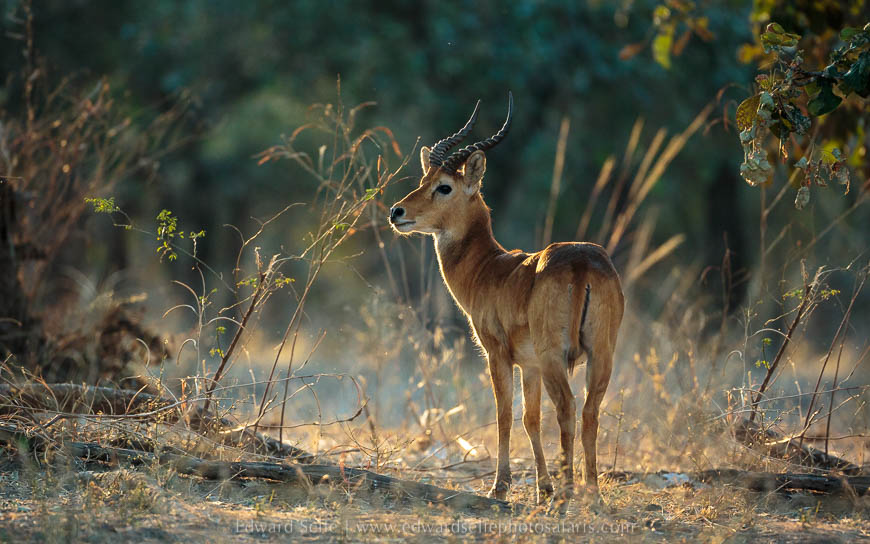
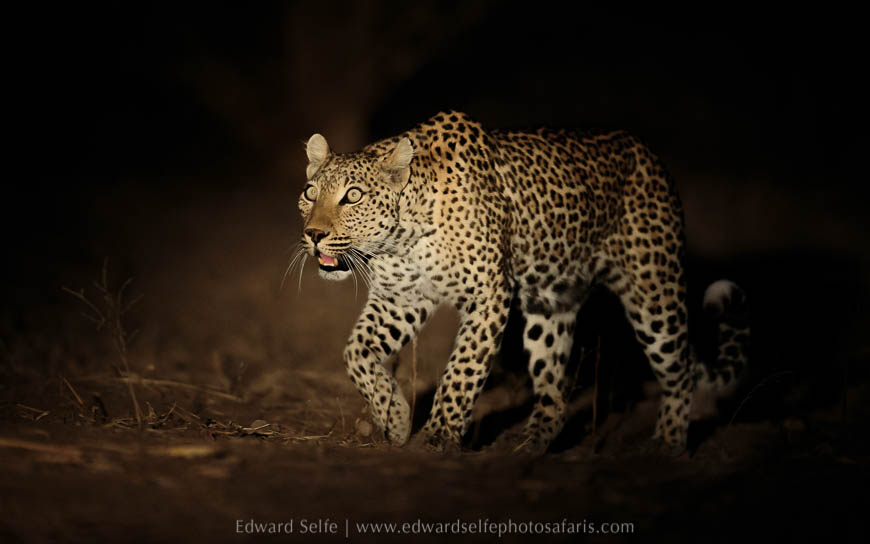
Our penultimate morning started with a Pel’s fishing owl at the edge of one of the seasonal streams. These secretive birds are a bucket-list item for many visitors to Africa, and any sighting is special. They are accomplished hunters, plucking fish from the water in the same way that ospreys and fish eagles do….! As it got lighter, it flew into a nearby tree.
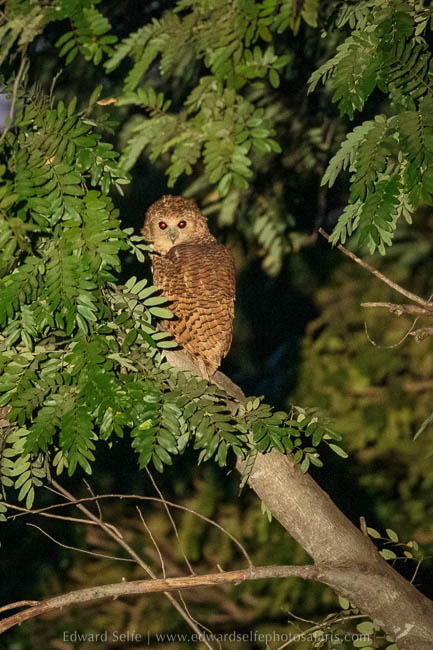
As we moved on, we caught sight of a small pack of 4 wild dogs appearing on the far side of the flooded channel! They looked as if they would cross the water and perhaps hunt on our side of the stream, but the appearance of a hyaena caused them to turn back into an area where we couldn’t follow. It was great to see them, but a very short sighting and we still hoped that our last 24 hours would give us more time with them.
The first hour after sunrise is the very best light of the day so we were very happy to find a herd of elephants near the water at a lagoon. Even better, they wanted to cross the water! We lined up for the best angles and waited for them. Visually, this was perhaps the sighting of the week. It’s very special to sit, pink light illuminating the scene, with our breaths still showing in the cold air, as a small herd of elephants cross the shallow lagoon. There is abundant forage on both sides, and it felt, almost, as if they had done it just for our benefit.
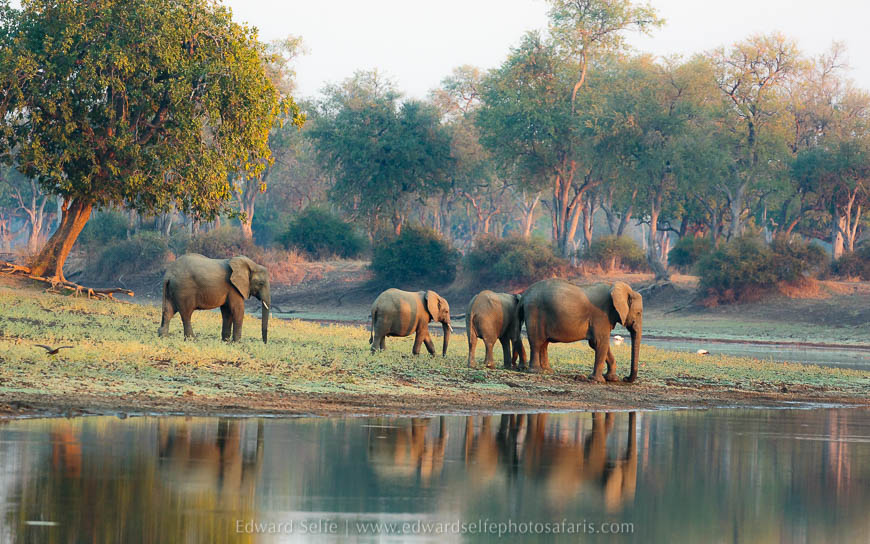
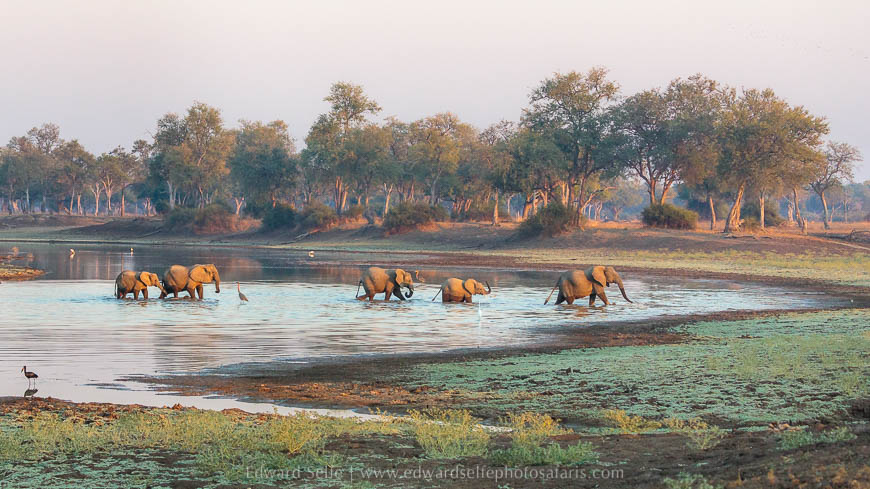
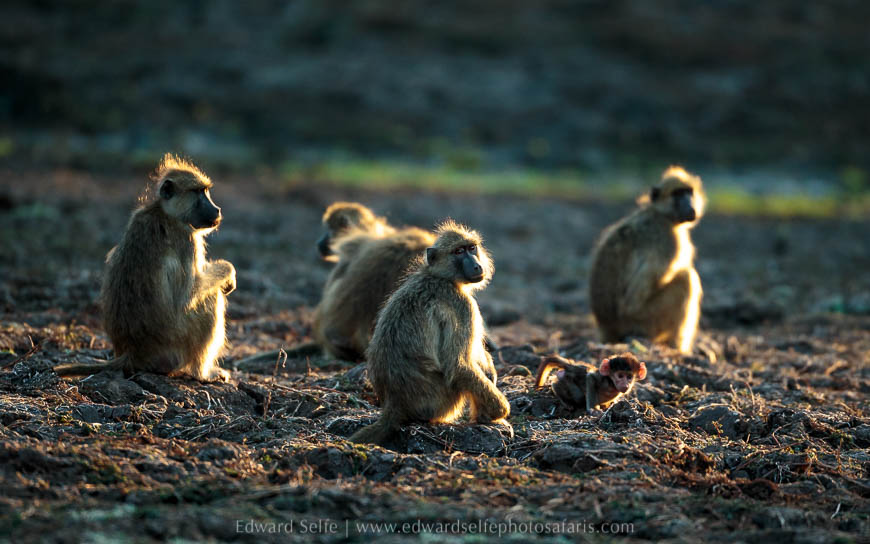
As we entered our final 24 hours, we hoped for a grand finale, but also for some time to reflect and absorb the surroundings. I joked with Mike as we drove across a plain, with a buffalo herd on one side and an elephant herd on the other, that we can never complain that we don’t see anything in Luangwa! The density and richness of sightings is very special.
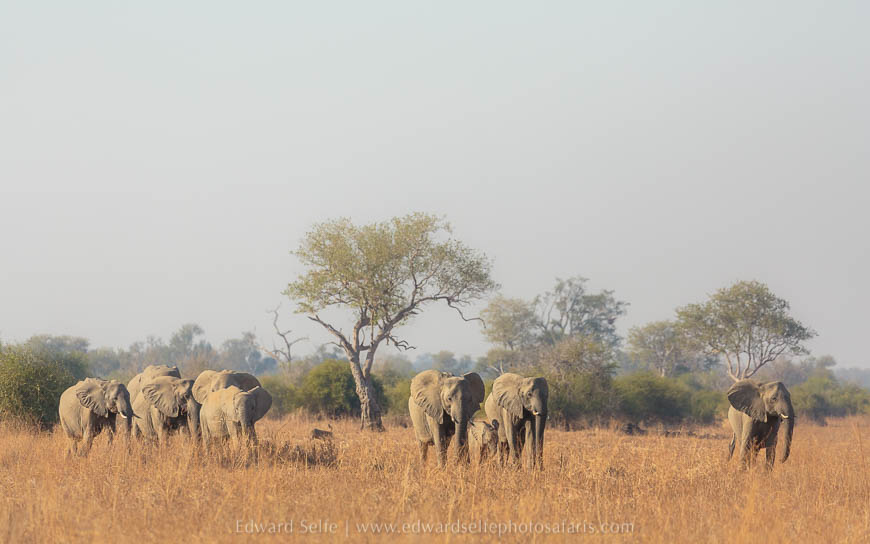
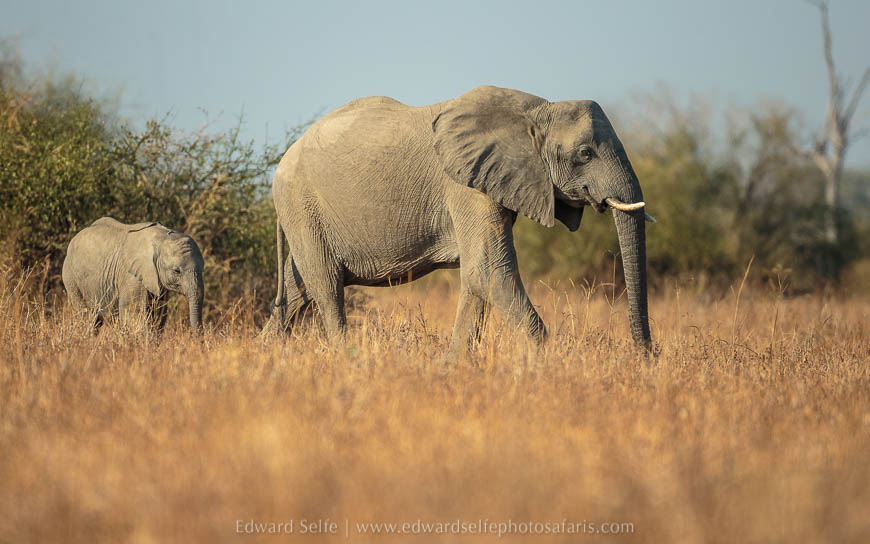
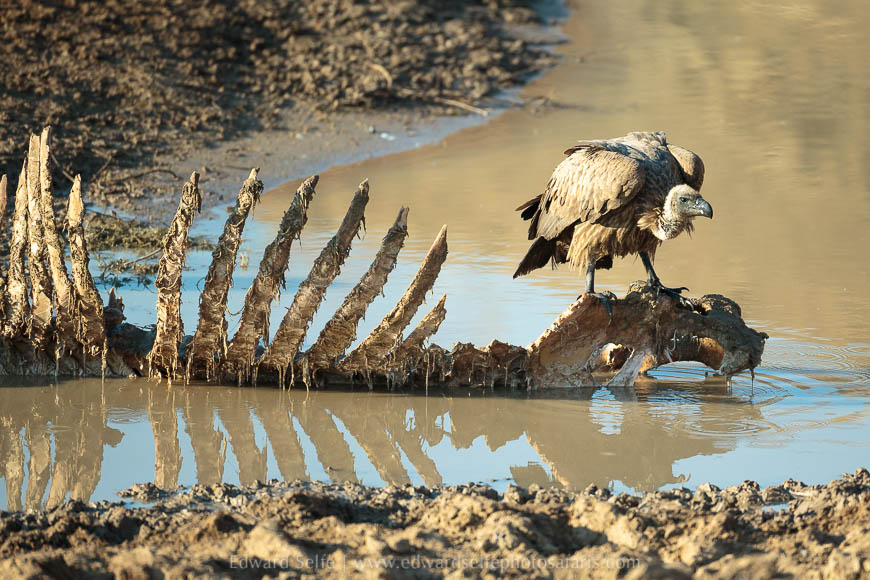
Vultures led us to this hippo carcass in the Croc river that had been completely stripped by scavengers.
We spent time with those buffalo and elephant herds, mixing close up portraits with long-lens landscapes to show them in their surroundings. One of the elephants — a distinctive bull with one long tusk — was having a bad day and objected to our presence heavily, so we moved off to avoid a confrontation! We never provoke wild animals in any way to get a reaction, but when a wild elephant wants to show that he’s in charge, it’s all part of an authentic safari experience!
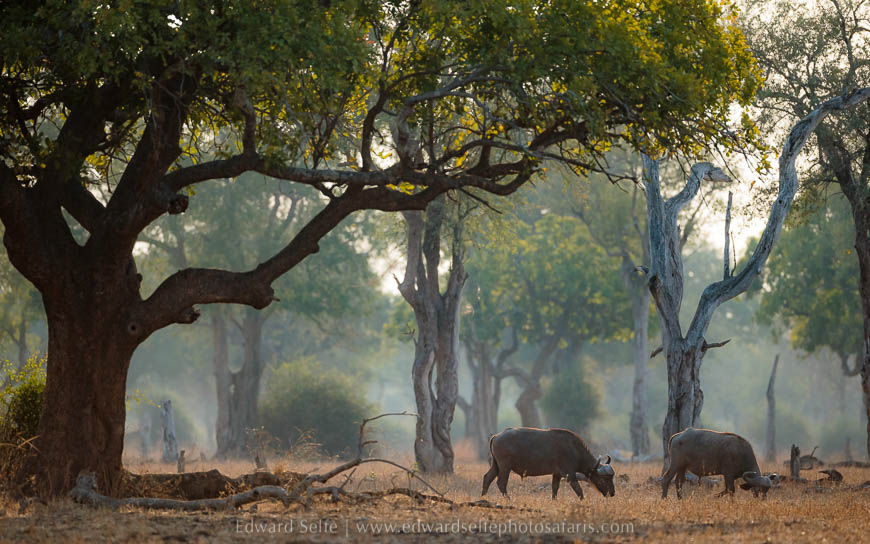
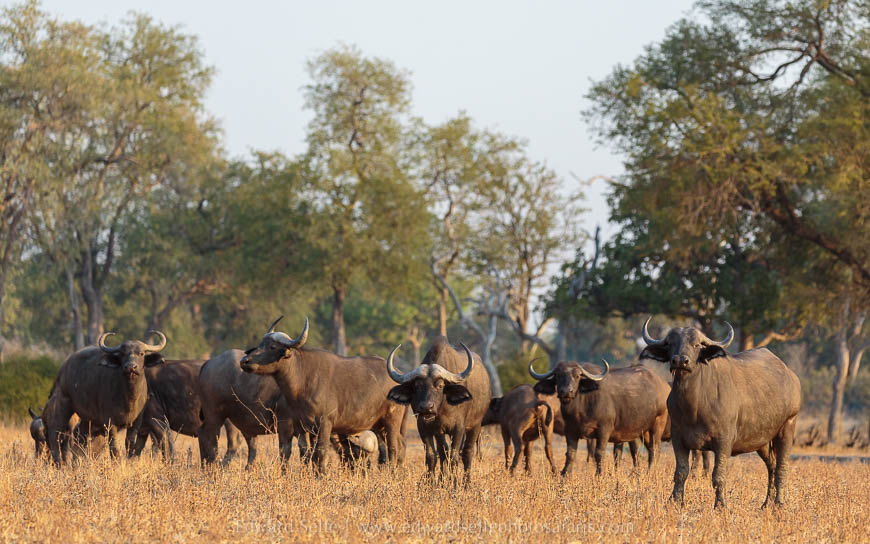
We ended with a magic sunset along the Luangwa River and reflected on the week. I was really pleased to hear Mike say that he thinks his photos are better this year than in any previous year, and I think we had a year of very scenic sightings. Whereas last year was filled with drama and kills, this year has been visually spectacular; silhouetted lions on the first evening, elephant herds in the water on many occasions, backlit leopards and baboons and that incredible golden Luangwa light throughout. As we left the park for the final time, I realised that I had seen many sights this week that were new to me….whether you are on trip 4, or year 11, there is always more to see and enjoy here.
